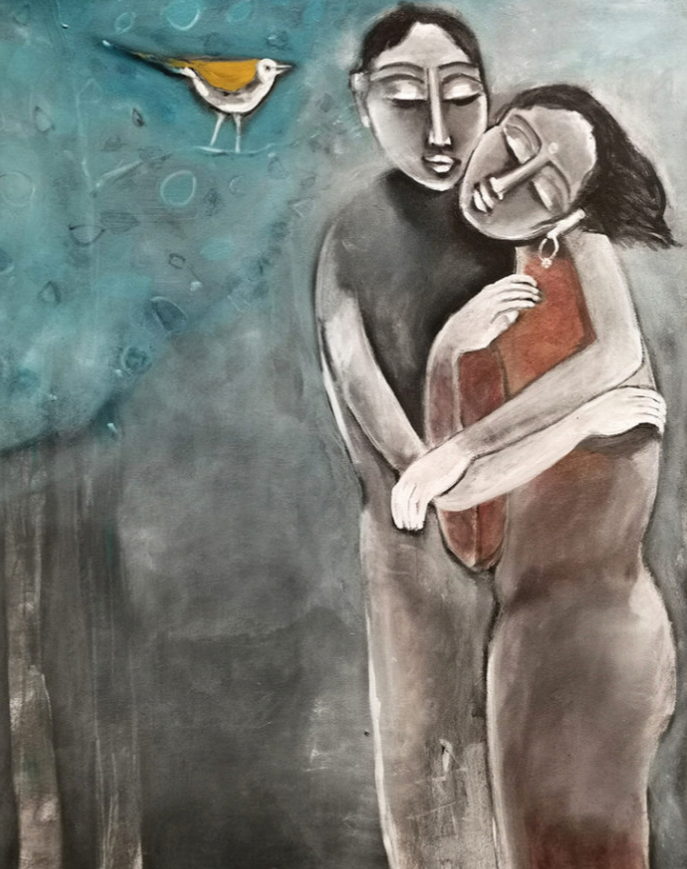Reading Love in Silence
A call to linger, to analyse how, in silence, there is no void, just a charged space created between two presences. How figures lean up against one another with heads faintly inclined, shoulders brushing, hands intertwined, suggest minimalism in gesture yet maximalism in its rendering of the emotive field.
In the ‘Love in Silence’ series, the figures barely strike an eruption of frantic gestures; rather, intimacy is expressed with subtle nuances of emotion. Muted shades of blues, greys, and earthen reds rule the canvas. Against the quiet backdrop, the canvas shows monumental gestures of neck tilts and faint arcs of two profiles merging. This is the very paradox that spells out Dr Gnana’s pictorial language: less is depicted, yet more is felt. From an art historiography point of view, this may bring to mind the modernist quest for essentiality in figures as seen in Henry Moore or Amrita Sher-Gil’s portraits. With Dr Gnana, the emotional strain is his own brand-bred on Indian concepts of rasa (sentiment), and in narrative traditions where love is quiet but eternal.

